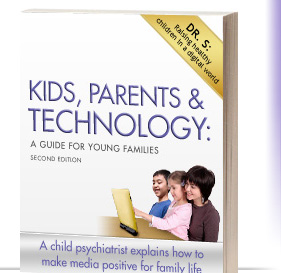Originally published by ThinkerMedia: BestThinking.com on April 24, 2014
Cell phones “have become indispensable tools in teen communication patterns. Text messaging explodes as teens embrace it as the centerpiece of their communication strategies with friends,” declares a current Pew Research Center study.
According to the Pew study, 1/3 of kids ages 12 to 17 send up to 3000 texts a month, and according to the recent Kaiser Family Foundation poll, 1/5 of this age group spend up to 132 hours of their week exposed to media. Both studies show that parental limits have little effect on how kids use the technology that continues to explode into their lives.
“These studies offer a fascinating look into the complicated ever-evolving interactions between youngsters, parents, and technology. Parents are still mostly reacting by setting limits, yet children remain essentially on their own.”
“The answer is not limits alone. Parents also need to get more involved and stay involved in positive and comprehensive ways with their media-soaked kids rather than merely imposing limits,” states child psychiatrist Dr. Eitan D. Schwarz, author of “Kids, Parents, and Technology: An Instruction Guide for Young Families.”
“Technology provides wonderful opportunities, but parents need guidance to systematically shape its best use in kids’ lives. I urge parents to embrace technology and make its balanced use part of family life from the early years, so that by the time kids become teenagers they will have the right perspective on it,” according to Dr. Schwarz.
Dr. Schwarz advises parents that using texting devices should be part of an overall family approach to media in the home:
• Take Charge – Have confidence and take charge. You can manage this important area of your kids’ lives. Many parents too readily take a back seat and let kids take the lead.
• The cell phone is a powerful appliance that must have positive benefits and limits to belong in children’s hands. Especially for younger pre-teens and teens, put a limit on the number of texting calls, block the Internet, and check the child’s phone regularly to verify who she is talking with and what she is saying.
• Create Healthy Media Rules – Tailor healthy media diets into daily menus for each child to provide development opportunities. For example, regularly require enough online time on apps and online that enhance good values and education enrichment. Apply rules to your own media use – be fully present with your kids, and do not text while parenting.
• Technology is healthy – From infancy onwards, teach kids to appreciate technology as a healthy and routine part of family life. Starting young, children will learn that using technology is collaborative and social — and not an isolating solitary activity. Always join preschoolers or younger kids using the tech toys.
• Include the Whole Family – Create a new environment around media to promote mutuality, fun, respect, and development for the entire family. It is large enough for kids and parents to interact around it.
• Make the Smartphone a Positive Learning Tool – Just as you already shop for healthy food, harvest the positive opportunities offered by its apps and online. For example, for every age group there are wonderful opportunities for learning.
• Create Healthy Media Plans – Tailor healthy media into daily menus for each child to provide development opportunities. For example, regularly require enough online time on apps and online that enhance good values and education enrichment.
• Apply Rules to your Own Media Use – be fully present with your kids, and do not text while parenting. Parents should be fully present with your children and avoid texting and cell phone use. Parents themselves may be damaging children when they are not fully present because they are online, on the cell phone, or texting. Not only are they rude or setting bad examples, but their distractions interrupt the vital bond necessary for healthy wiring of young children’s brains.
Article by Eitan ‘Dr. S®’ Schwarz, MD
©All rights reserved



Pew Report: Youth Texting and Media Use Explode, but Parent Limits Have Little Effect
Originally published by ThinkerMedia: BestThinking.com on April 24, 2014
Cell phones “have become indispensable tools in teen communication patterns. Text messaging explodes as teens embrace it as the centerpiece of their communication strategies with friends,” declares a current Pew Research Center study.
According to the Pew study, 1/3 of kids ages 12 to 17 send up to 3000 texts a month, and according to the recent Kaiser Family Foundation poll, 1/5 of this age group spend up to 132 hours of their week exposed to media. Both studies show that parental limits have little effect on how kids use the technology that continues to explode into their lives.
“These studies offer a fascinating look into the complicated ever-evolving interactions between youngsters, parents, and technology. Parents are still mostly reacting by setting limits, yet children remain essentially on their own.”
“The answer is not limits alone. Parents also need to get more involved and stay involved in positive and comprehensive ways with their media-soaked kids rather than merely imposing limits,” states child psychiatrist Dr. Eitan D. Schwarz, author of “Kids, Parents, and Technology: An Instruction Guide for Young Families.”
“Technology provides wonderful opportunities, but parents need guidance to systematically shape its best use in kids’ lives. I urge parents to embrace technology and make its balanced use part of family life from the early years, so that by the time kids become teenagers they will have the right perspective on it,” according to Dr. Schwarz.
Dr. Schwarz advises parents that using texting devices should be part of an overall family approach to media in the home:
• Take Charge – Have confidence and take charge. You can manage this important area of your kids’ lives. Many parents too readily take a back seat and let kids take the lead.
• The cell phone is a powerful appliance that must have positive benefits and limits to belong in children’s hands. Especially for younger pre-teens and teens, put a limit on the number of texting calls, block the Internet, and check the child’s phone regularly to verify who she is talking with and what she is saying.
• Create Healthy Media Rules – Tailor healthy media diets into daily menus for each child to provide development opportunities. For example, regularly require enough online time on apps and online that enhance good values and education enrichment. Apply rules to your own media use – be fully present with your kids, and do not text while parenting.
• Technology is healthy – From infancy onwards, teach kids to appreciate technology as a healthy and routine part of family life. Starting young, children will learn that using technology is collaborative and social — and not an isolating solitary activity. Always join preschoolers or younger kids using the tech toys.
• Include the Whole Family – Create a new environment around media to promote mutuality, fun, respect, and development for the entire family. It is large enough for kids and parents to interact around it.
• Make the Smartphone a Positive Learning Tool – Just as you already shop for healthy food, harvest the positive opportunities offered by its apps and online. For example, for every age group there are wonderful opportunities for learning.
• Create Healthy Media Plans – Tailor healthy media into daily menus for each child to provide development opportunities. For example, regularly require enough online time on apps and online that enhance good values and education enrichment.
• Apply Rules to your Own Media Use – be fully present with your kids, and do not text while parenting. Parents should be fully present with your children and avoid texting and cell phone use. Parents themselves may be damaging children when they are not fully present because they are online, on the cell phone, or texting. Not only are they rude or setting bad examples, but their distractions interrupt the vital bond necessary for healthy wiring of young children’s brains.
Article by Eitan ‘Dr. S®’ Schwarz, MD
©All rights reserved